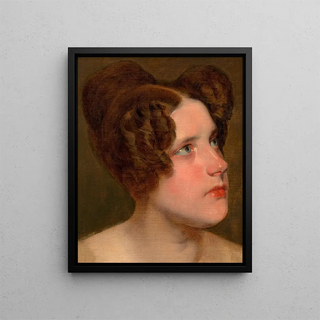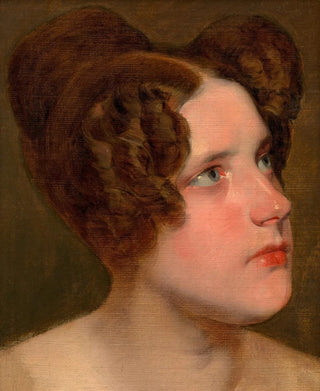Art print | Marie Baumann married Loewe - Friedrich von Amerling


View from behind

Frame (optional)
In the fascinating universe of art, some works transcend time and space, captivating the eye and the mind. "Marie Baumann a épousé Loewe" by Friedrich von Amerling is one of those creations that, through its beauty and elegance, transports us to the heart of the 19th century. This painting, which depicts an intimate and solemn moment, bears witness not only to a personal event but also to an era marked by values such as love, family, and social status. Through this artwork, the artist manages to capture the essence of a sacred union, while offering us a glimpse into the customs and traditions of his time. The finesse of the details and the depth of the emotions felt by the characters make this piece a true masterpiece.
Style and uniqueness of the work
The uniqueness of "Marie Baumann a épousé Loewe" lies in Friedrich von Amerling's inimitable style, which combines realism and romanticism with undeniable mastery. The artist stands out for his ability to represent light and movement, creating an atmosphere filled with softness and serenity. The faces of the protagonists, finely crafted, reveal nuanced expressions that speak directly to the viewer. The drapery of the clothing, with great delicacy, almost seems alive, as if it too were telling a story. The color palette, subtly chosen, evokes harmony that enhances the poetry of the scene. Every element, from the background to the foreground, is carefully arranged, reflecting Amerling's meticulous attention to detail. This work does not merely depict a frozen moment; it invites reflection on human relationships and the commitments underlying them.
The artist and his influence
Friedrich von Amerling, an emblematic figure of the 19th century, established himself as one of the most sought-after portraitists of his time. Of Austrian origin, he was influenced by the great masters of the past, while developing a personal style that is uniquely his own. His training at the Vienna Academy of Fine Arts was instrumental in refining his talent.

Matte finish

View from behind

Frame (optional)
In the fascinating universe of art, some works transcend time and space, captivating the eye and the mind. "Marie Baumann a épousé Loewe" by Friedrich von Amerling is one of those creations that, through its beauty and elegance, transports us to the heart of the 19th century. This painting, which depicts an intimate and solemn moment, bears witness not only to a personal event but also to an era marked by values such as love, family, and social status. Through this artwork, the artist manages to capture the essence of a sacred union, while offering us a glimpse into the customs and traditions of his time. The finesse of the details and the depth of the emotions felt by the characters make this piece a true masterpiece.
Style and uniqueness of the work
The uniqueness of "Marie Baumann a épousé Loewe" lies in Friedrich von Amerling's inimitable style, which combines realism and romanticism with undeniable mastery. The artist stands out for his ability to represent light and movement, creating an atmosphere filled with softness and serenity. The faces of the protagonists, finely crafted, reveal nuanced expressions that speak directly to the viewer. The drapery of the clothing, with great delicacy, almost seems alive, as if it too were telling a story. The color palette, subtly chosen, evokes harmony that enhances the poetry of the scene. Every element, from the background to the foreground, is carefully arranged, reflecting Amerling's meticulous attention to detail. This work does not merely depict a frozen moment; it invites reflection on human relationships and the commitments underlying them.
The artist and his influence
Friedrich von Amerling, an emblematic figure of the 19th century, established himself as one of the most sought-after portraitists of his time. Of Austrian origin, he was influenced by the great masters of the past, while developing a personal style that is uniquely his own. His training at the Vienna Academy of Fine Arts was instrumental in refining his talent.






